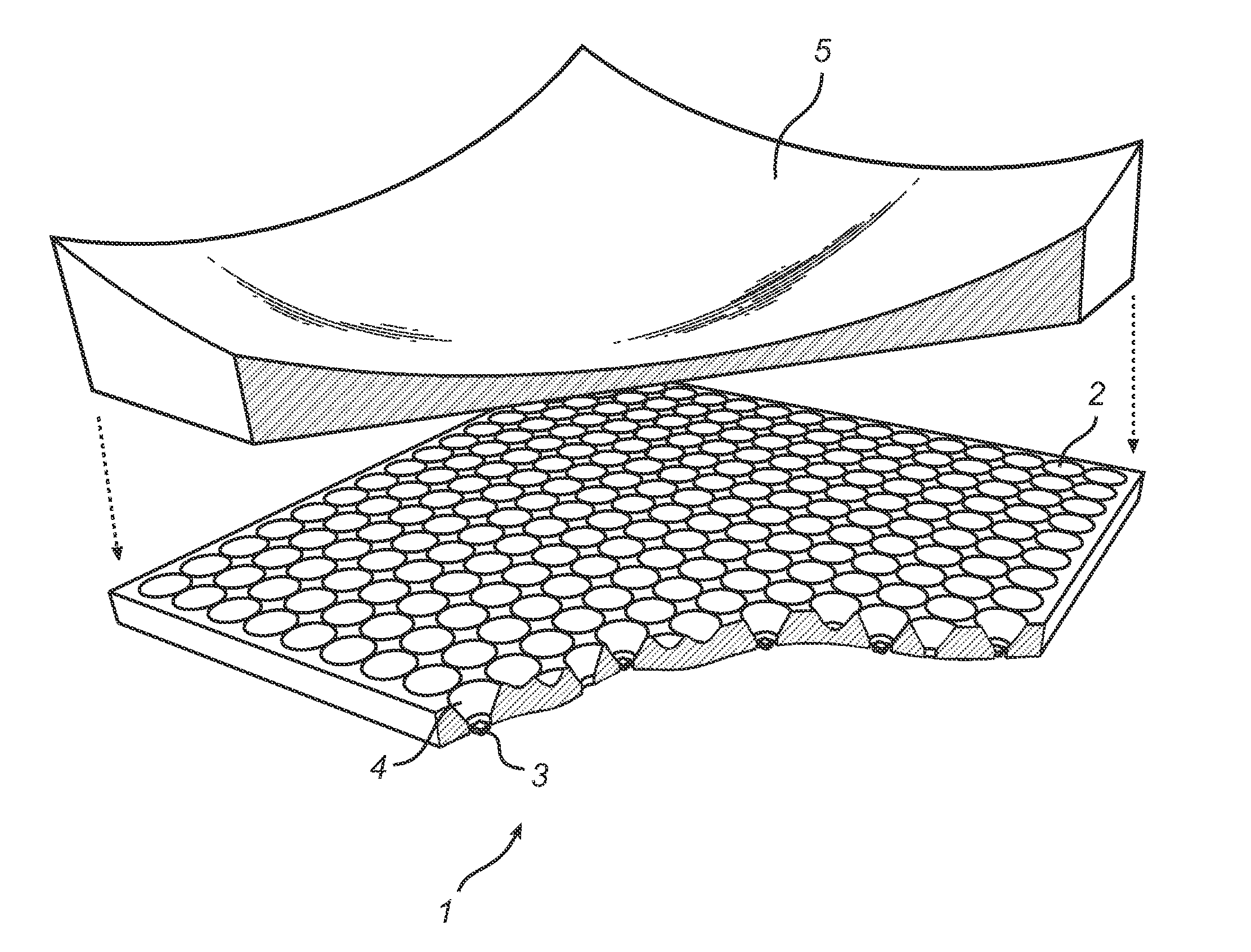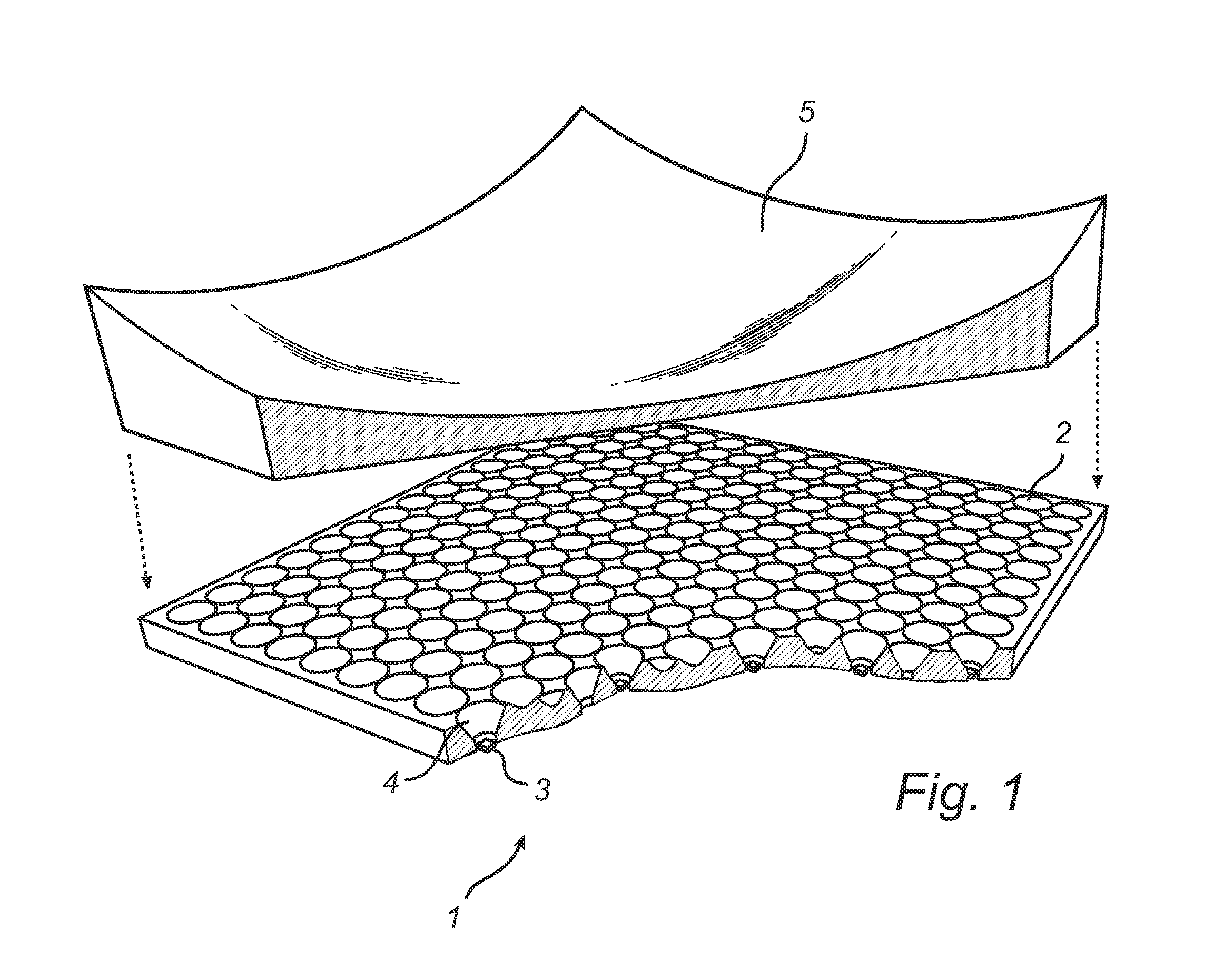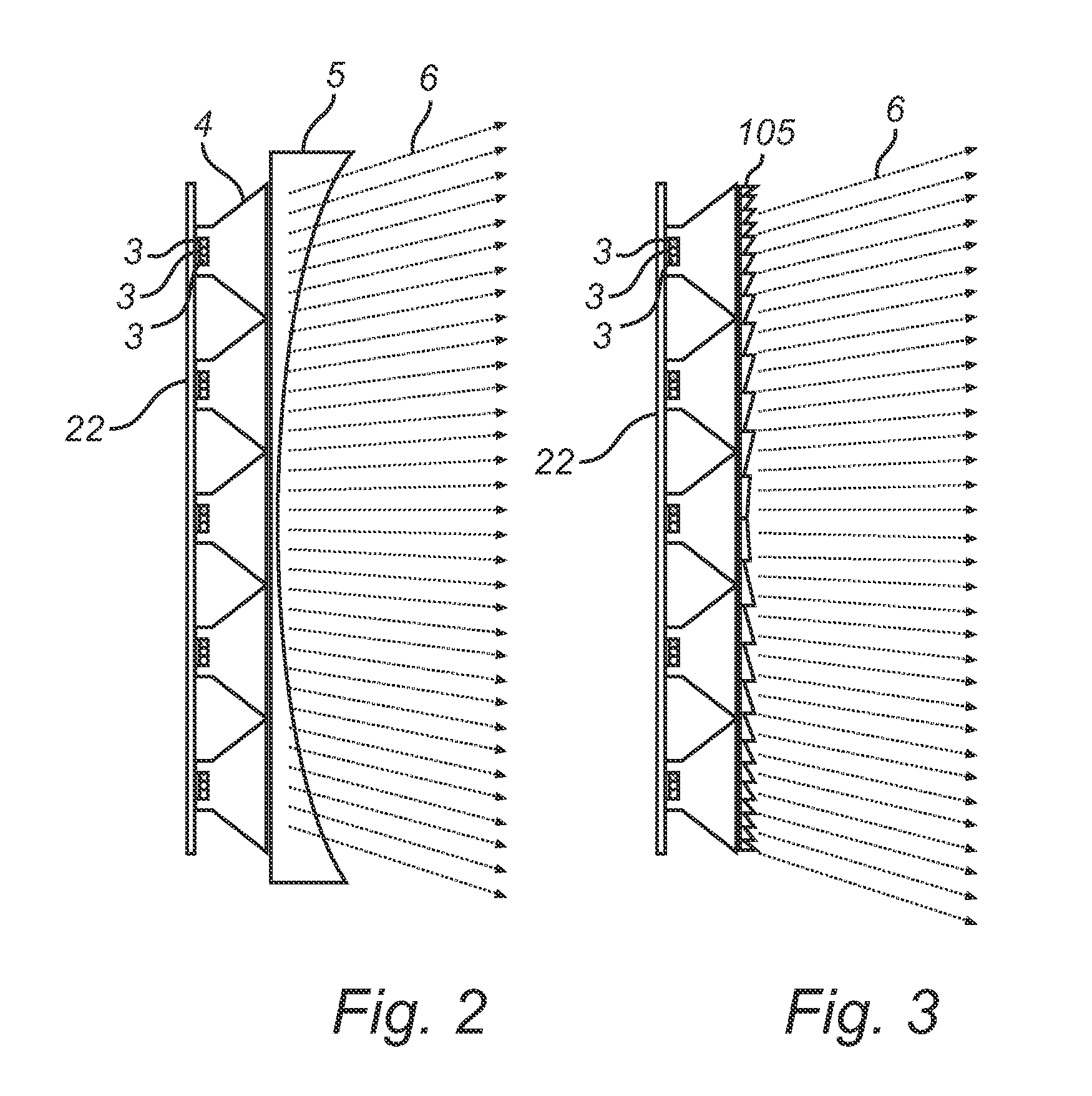Controllable lighting system
a technology of lighting system and control panel, which is applied in the direction of lighting and heating apparatus, semiconductor devices of light sources, light source combinations, etc., can solve the problems of system thickness and bulk, often not thin and compact, and achieve the effect of thin and compa
- Summary
- Abstract
- Description
- Claims
- Application Information
AI Technical Summary
Benefits of technology
Problems solved by technology
Method used
Image
Examples
Embodiment Construction
[0024]The lighting unit in the illustrated example in form of a lamp 1 in FIG. 1 comprises an array of collimated light sources 2 arranged in a two dimensional array wherein the two dimensional array is a rectangular 16×16-array. The collimated light sources 2, each comprises a plurality of the controllable light emitting elements 3 and a beam collimating optics 4, wherein each collimated light source 2 includes a red, a blue, and a green light emitting element 3, preferably in form of a red, a blue and a green Light Emitting Diode (LED) 3. Alternatively each collimated light source 2 may include a red, a blue, a green and a white light emitting element 3. The lamp 1 further comprises a negative lens 5 arranged on top of the collimated light sources 2.
[0025]FIG. 2 shows a schematic view of a lamp with a negative lens 5. A number of light emitting elements 3 may e.g. be mounted on a Printed Circuit Board (PCB) layer 22. The PCB may e.g. comprise an isolated carrier made of a heat tra...
PUM
 Login to View More
Login to View More Abstract
Description
Claims
Application Information
 Login to View More
Login to View More - R&D
- Intellectual Property
- Life Sciences
- Materials
- Tech Scout
- Unparalleled Data Quality
- Higher Quality Content
- 60% Fewer Hallucinations
Browse by: Latest US Patents, China's latest patents, Technical Efficacy Thesaurus, Application Domain, Technology Topic, Popular Technical Reports.
© 2025 PatSnap. All rights reserved.Legal|Privacy policy|Modern Slavery Act Transparency Statement|Sitemap|About US| Contact US: help@patsnap.com



